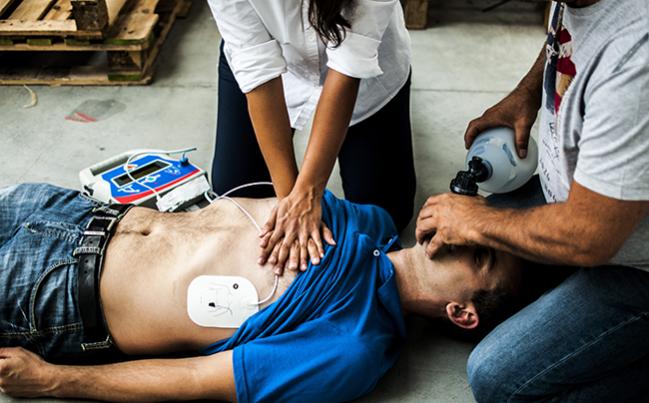Bystander CPR Linked to Less Brain Damage, More Independent Living for Cardiac Arrest Survivors
A nationwide analysis of cardiac arrests in Denmark supports efforts to protect Good Samaritans and improve access to AEDs.

There’s more evidence, this time from Denmark, that bystander resuscitation significantly improves the likelihood that a cardiac arrest victim will survive. Moreover, that survival is less likely to come at the price of brain damage or nursing home admission.
Investigators believe theirs is the first nationwide analysis to look at long-term functional outcomes among cardiac arrest survivors in relation to bystander intervention.
“Our study findings should encourage policymakers to make adequate legislation for Good Samaritan laws as well as . . . encourage mandatory courses in CPR and how to use an [automated external defibrillator (AED)],” lead author Kristian Kragholm, MD (Aalborg University, Denmark), told TCTMD in an email. Good Samaritan laws, which exist to protect individuals who come to the rescue and who initiate resuscitative efforts, are found across all US states but are not uniform in other countries including Canada, he noted. Mandatory CPR training is also not the norm, although in Denmark basic life-support courses are mandatory in elementary schools and when acquiring a driver's license, he said.
The study was published last week in the New England Journal of Medicine.
Shifts Seen Over 12-Year Period
Kragholm and colleagues analyzed data on out-of-hospital cardiac arrests from the Danish Cardiac Arrest Registry between 2001 and 2012, excluding patients who were in nursing homes or had brain damage prior to their event. Follow-up data were then obtained from other nationwide registries.
Over the study period, resuscitation was attempted in more than 42,000 people who suffered a cardiac arrest in Denmark. Just 2,855 of them survived 30 days, although the number of 30-day survivors increased over the study period from just 3.9% in 2001 to 12.4% in 2012.
During the same period, the rate of bystander CPR in the 2,084 survivors whose collapse was not witnessed by EMS personnel increased from 66.7% to 80.6% and the rate of bystander defibrillation increased from 2.1% to 16.8% (both P < .001).
Of the survivors, 10.5% suffered anoxic brain injury or were admitted to a nursing home and 9.7% died over the course of the following year. The likelihood of those outcomes, however, declined over time in parallel with the rise in bystander CPR, including defibrillation. After adjustment, bystander CPR was associated with a 38% lower risk of brain damage or nursing home admission as compared with no bystander intervention. Bystander defibrillation using an AED was even more strongly associated with survival free from these two outcomes.
A similar study in Sweden saw a rise in 30-day survival that researchers attributed in part to updated guidance recommending chest-compression-only CPR. In this Danish study, “we were not able to examine what type of bystander CPR was performed,” Kragholm said. “However, we were able to link bystander CPR and bystander defibrillation—use of an AED to defibrillate the person with cardiac arrest—to significantly lower risks of nursing home admission and brain damage.”
In Denmark, he added, a nationwide registry containing information on the whereabouts and accessibility of all registered AEDs has been created. “Information from this AED registry is publically available by use of a smartphone application [and] is linked to the emergency dispatch centers, enabling healthcare professionals at these centers to guide bystanders to the nearest AED in addition to helping bystanders recognize the cardiac arrest and start chest compressions.”
Shelley Wood is the Editor-in-Chief of TCTMD and the Editorial Director at CRF. She did her undergraduate degree at McGill…
Read Full BioSources
Kragholm K, Wissenberg M, Mortensen RN, et al. Bystander efforts and 1-year outcomes in out-of-hospital cardiac arrest. N Engl J Med. 2017;376:1737-1747.
Disclosures
- The study was supported by the Danish foundation TrygFonden and the Danish Heart Foundation.


Comments